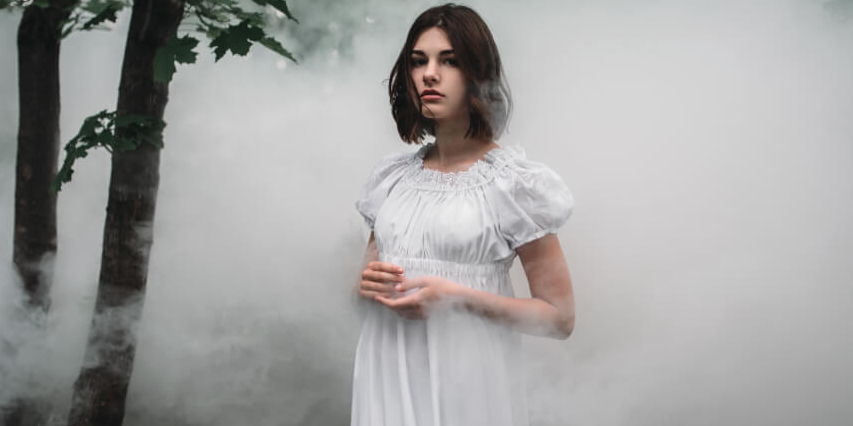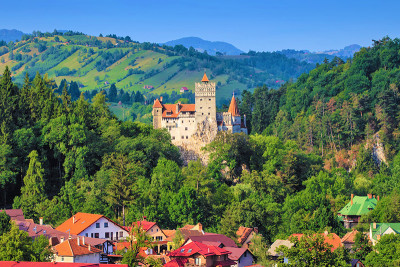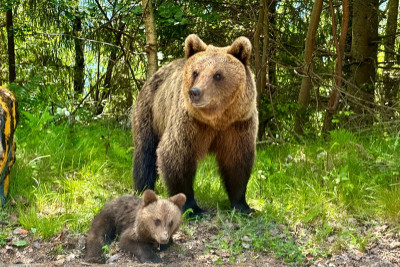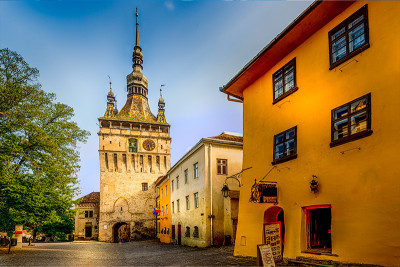You likely have at least a passing knowledge of both Roman and Greek mythology, and maybe you even learned about these in school or history class. What you might not know is that Romania has rich mythological history as well, with exciting stories and legends that have stood the test of time!
Zburatorul: The Lover From The Stars
Zburatorul literally means “the one who flies” and he is sometimes referred to as “The Flyer.” This mythological character is a handsome and mysterious prince of the night. He is known for tormenting young women and young wives while they sleep. In actuality, Zburatorul is just the personification of the woman’s uncontrollable and erotic desire for men (would you believe it if we told you that a man made up this legendary figure?).
Zburatorul is sometimes described as a shooting star, a piercing light that enters thorugh a woman’s window at night. When he enters the woman’s room, all the woman can see is an astonishingly handsome man, or the shape of the man that she desires for the most.
They approach each other and consume their love in the world of dreams. Everything feels real, so real in fact that the woman becomes both exhausted and madly in love.
Although the Zburatorul may seem like a fun or harmless character, he actually caused destruction on many women’s lives. He would enchant women at night in such a way that the women had no energy to live their normal day. They would be exhausted all day and would be anxious to go to back to sleep to live back in their dream world.
They were living for their dreams, and would not bother getting themselves ready for the day, often barely even getting dressed before facing the world. Many of them lost their marriages or were on the brink of separation. These women were often thought of as floozies.
Despite the destruction of the Zburatorul, there was a cure: being healed by a sorceress. These sorceresses knew just the right words and the right herbs to get the Zburatorul to leave these innocent women alone. With the Zburatorul gone, the women could go back to their normal lives.
The Solomonar
This is a character that rides a dragon and controls the weather and natural disasters. He is the sorcerer of the storms and winds; maker of the mist, hail and clouds; and ruler of the waters, mountains and caves. He is tall and red-headed and has big eyes. He always wears a long white coat and carries around a book with him, a book which is the source of all his magic. People also say he carries a piece of wood to control the winds and an ax to create hail.
The Solomonar is not just one person, but it is a job that is handed down from one generation to the next. The Solomonar is chosen at birth, not by humans but by a power above. You know a Solomonar has been born because there will be a sign signifying this across his face.
When a Solomonar is born, he must be trained until he is ready. He must study every language in the world, master every spell ever uttered, and finally he will be left to himself to write his own book. That is how you know he is ready.
Because of his extensive training, he is a masterful wizard. Oftentimes, he will roam towns dressed as a beggar, in attempt to test the kindness of the people. If he is treated unkindly, the people will be punished with hail and poor crop yield.
Some believe that the story of the Solomonar comes from the Biblical King Soloman. Others believe that this tale is derived from the story of Zeus, who was king of the gods and could control the weather. There are a couple other hypotheses, but it is impossible to know exactly where this story came from.
Jidovi: The Carpathian Giants
The of the Jidovi as gentle giants. The story goes that these giant humans ruled the world. And their tale is more than just a tale – people really believe that these giant people roamed our world. Whether or not this is true, the stories about them are enchanting!
The Jidovi are described as humble, patient and kind. They were able to step fluidly from one hill to the next. In fact, the jidovina is a measuring unit of measurement consisting of several meters, thought to be the length of the giant’s footstep.
Sometimes the Jidovi are called the Blajini, meaning “the Kind Ones,” or the Novaci, meaning “the Powerful Ones.” They were incredibly strong, able to uproot a tree without any effort at all. These giants lived among humans our size, and they thought of us as their successors, or the inheritors of their earth. Because of this, they were kind to us and respected us.
One of the stories of the Jidovi is that they had a pact with the Dacian King, Burebista, who ruled from about 82 B.C. to 45 B.C. (the Dacians were the ancient inhabitants of present-day Romania). The agreement was that the Jidovi could live in the mountains only if they protected the Dacian golden treasures. The Carpathian Mountains are vast, and the agreement was to protect the Dacian treasures forever. Because of this, some believe that the Jidovi are still alive, tucked away in the mountains, protecting the treasures.
The Jidovi have always been held in high regard and, because of this, there are many places that are named after these giants: the Jidovi table, the Jidovi cave, the hills of the Jidovi, and the tombs of the Jidovi. As recent as the early 1900s, people claim that their grandparents had first-hand encounters with the Jidovi.
There you have it, three classic Romanian legends! We hope that these tales were entertaining and that they inspire you to learn more about Romanian myths and legends!

 ES
ES
 IT
IT
 DE
DE
 FR
FR


